Wood Stoves
|
Among oldtimers, stove building was an art form. There were different kinds of stoves for different applications: tent stoves, steambath stoves, and stoves for larger and smaller cabins. People developed precise skills in cutting and shaping iron. Many experiments took place and stove construction was a common topic of conversation. I have spent a lot of time thinking about and making better stoves. The ultimate stove always seems to be “the next one I build.” One time a young girl came into our cabin. I had a stovepipe standing on the floor. She circled it carefully, studying it. She had seen me experiment with so many crazy things she couldn’t believe that it was just an ordinary stovepipe standing on the floor. She thought it was another of my wild ideas. I have filled houses with smoke, but have never burned one down. My study of stoves has given me insight into the ways other things work as well. |
||
Understanding Tree Growth (photosynthesis)
water + carbon dioxide + sun’s energy (light) + minerals
= This process takes many years. When we bring a tree home, we are bringing energy stored in the wood from years of the sun’s radiant energy. The light energy of the sun has been converted to chemical energy in the wood by photosynthesis. Releasing the Energy When we apply heat to wood in the form of a match and a little burning paper, we start the process by which the chemicals in the wood release their energy. This process is the opposite of the process by which the tree grows. The stored chemical energy of the wood is changed to heat energy. We use that energy to heat our homes. Wood Burning Wood + Oxygen = Water + Carbon Dioxide + energy (heat) + minerals When we heat our homes with wood, we are releasing the stored energy of the sun from years past. We receive energy from a time before many of us were born. That is amazing. Energy stored for twenty, thirty, sixty, or eighty years is released in four to five hours. Smoke The smoke from a wood fire contains water, carbon dioxide, carbon monoxide, minerals, and some heat energy. The ashes left in the stove represent the minerals left behind. |
|||
|
shavings
kindling |
Starting a Fire
If we try to start a fire by applying a match to a log, it won’t burn. The match can’t provide enough heat to get the log burning. We have enough fuel and enough oxygen, but not enough heat. If we start a fire with small pieces (shavings and kindling), not much heat is required to get them burning. There is a great amount of surface area that can burn, and not much wood to heat to the kindling temperature. There is sufficient fuel, heat and oxygen. Once we get the smaller pieces of wood ignited, they provide enough heat to get the larger pieces burning. Birch bark is an excellent firestarter, but the supply is quickly exhausted close to a cabin. Some people use dry grass. Shavings and kindling are prepared in the evening so a fire can be readily made in the cold morning. |
||
Increasing BurningIf we want to speed up the burning process, we can increase any one or all three: fuel, heat, oxygen. Increasing Fuel Adding wood to a fire increases the amount of heat because more fuel is available to burn. Increasing Air (oxygen) Increasing the amount of air (oxygen), makes a fire burn faster. This is why we blow on a camp fire or fan it when it is reluctant to burn. Increasing Heat We can do this by insulating the stove with bricks as we do in modern wood stoves, or moving the pieces of wood closer together. |
|||
|
Big
pieces burn |
Controlling a FireWood stove. We control a wood stove by controlling the amount of air allowed into the firebox and controlling the amount and type of wood. Campfire. We control a campfire by spreading the wood apart or bringing it together. We add wood gradually to give a sustained fire. Controlling Air There are two ways to control the air supply in a wood stove:
If we close the damper on the stovepipe, the fire slows down. Fire needs oxygen to continue. The air intake is slowed down by the control in the front of the stove. The air exhaust is slowed down by the damper. Controlling Fuel Available We control the fire by the amount, type, and size of fuel we put in. A stove filled with wood will burn harder than a stove one-quarter full. Dry wood burns faster than green wood. A solid block of wood burns slower than the same block of wood
split into many pieces. Wood can only burn on it’s surface.
If we increase the surface area of wood by splitting, it burns much
faster. Placing the Wood Before going to bed at night, I put two big logs on the outside of the stove and put the smaller pieces in the middle. The smaller pieces burn out during the night. The big logs are far apart in the stove causing them to burn much slower than if they were close together. Their charred remains are all that’s necessary to start the morning’s fire. |
||
Mud and BricksDirt in the bottom of the stove acts as an insulator, keeping the stove from getting too hot on the bottom, endangering the floor. Dirt also retains heat in the stove, keeping the temperature and rate of burning even. It takes a while to warm the dirt, but once it is warm, the retained heat helps keep the fire going. In the morning, a few burning embers on the dirt base make fire starting an easy task. Oldtimers avoided putting black rocks in the stove as their water content causes them to explode. Their internal water turns into steam and expands violently. When setting a tent stove in the winter, there is sometimes no choice but to get gravel from the bottom of the waterhole in the creek or river. All other dirt is frozen. The first night is often lively. Today, most manufactured stoves are lined with bricks that hold heat, keeping the temperature in the firebox steady. |
|||
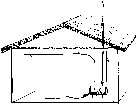
|
Draft In traditional Alaskan housing, the smoke rose and exited the house through a hole in the roof. |
||
|
Stove
too small— |
Considerations in DesignSize If a stove is too big, the fire is too far from the stove’s surface. It won’t throw much heat. Years ago I saw a 100-gallon drum converted to a stove. It consumed huge quantities of wood, and threw little heat. A 55 gallon drum is just right to make a stove for a house. If the stove is too small, it can’t hold enough wood to burn for long. Small stoves also require splitting the wood very small. If a stove’s top surface isn’t flat, it is dangerous trying to heat water or cook on it. If the surface is too high above the fire, it will take a long time to boil water. If the surface is too low, the stove cannot hold enough wood. If the surface is black, it will radiate heat well. A light colored stove will not radiate heat well at all. |
||

|
Stovepipe If the stovepipe is too short, it can’t get enough upward draft and will burn poorly. When the wind comes from the opposite side of the house, there is an eddy effect off the roof. The wind blows down the stovepipe and blows smoke into the house. The teacher’s quarters in my second village did this. Several times we ran out of the house with tears pouring down our cheeks. The most dangerous place for highly flammable creosote and soot to accumulate is where the pipe emerges from the building. The smoke is condensed there because the pipe is cooled greatly at that point. This is also where the pipe is closest to the building materials. When a fire occurs in a stovepipe, it is called a “stack fire”. Stack fires have burned many Alaskan homes to the ground. Nowadays we use insulated metalbestos pipes. Before metalbestos, we had only black or galvanized pipes, and homemade “roof jacks.” Air Control If the stove can’t control the air flow well, the fire will rage for a while making the house too hot, then it will go out long before morning. If the stove is too airtight the stovepipe will soot up dangerously within a few weeks. Modern technology has brought us wire brushes to clean our stovepipes. From the roof, we used to rattle a dog chain tied to a small rope up and down inside the stovepipe. |
||

|
|
||
|
|
Drum Stove This stove is better for houses and larger steambaths. A good airtight door is a must for a home. Such stoves hold large quantities of wood, but can they get very hot if the air is not controlled. Commercial doors made from cast iron are best, as the amount of heat generated will warp most homemade doors. This type of stove uses a six-inch stovepipe. Modern Commercial Stoves There are a multitude of commercial stoves available today. For a while they made sense, having fans to increase heat transfer, thermostatically controlled air flow, airtight doors, preheated intake air, and even catalytic converters. Nowadays many are so filled with pollution controlling devices you can’t get enough wood in them to heat the house. Some of the features of newer stoves are as follows. Thermostatically controlled airflow. Two kinds of metal are bonded together and wound in a spiral. The two metals expand at different rates when heated. It is called a ‘bimetal helix coil.” It requires no electricity to operate. It is connected to the air intake door. When it is cooled, the coil contracts, pulling the air intake door open to the stove. When it is warmed, it expands, allowing the air intake door to fall shut. Airtight Doors. If the door isn’t airtight, air can leak into the fire, and it will roar until the wood is consumed. Doors used to be sealed with asbestos. The new man-made material tends to shrink and fall out after a while, requiring replacement. Modern stove doors don’t compare with the ones that used to be available. Preheated Air. If cold air is drawn into the firebox, it slows down the burning of the fuel. Remember, heat is one of the necessary ingredients of burning. Burning is more efficient when the air being introduced into the firebox is warmed first. Catalytic Converters. The idea is wonderful. When a stove’s air supply is shut down, many gasses are given off from the wood that have tremendous energy potential. They used to be lost up the stovepipe. On the surface of a catalytic converter, in the presence of fresh preheated air, the gasses are burned efficiently . . . in theory. In reality, there are problems. The catalytic converters become plugged and soot up. They are damaged when printer’s ink or other chemicals are burned in the stove. Often people bypass the catalytic converter or take them out because they function poorly after several months. |
||
ProblemsWhen we burn oil in a stove, we
When we burn wood in a stove, we:
In an airtight woodstove, this produces incomplete burning. If a stove is not airtight, the fire is seldom at the desired temperature. If we could “leak” the wood gradually into the firebox and allow free airflow in the manner of an oil stove, burning would be more efficient. In the front of the log, burning is fairly complete. There is fuel, oxygen, and enough heat. However, when the mixture of smoky gasses go to the back of the log, the air has been exhausted of it’s oxygen. Many gasses are released from the back of the wood that don’t have the opportunity to burn and release their heat. Long logs don’t burn as efficiently as shorter ones for this reason. |
|||

|
Damp Wood When wood is “green” or the water content is high, there are additional problems. Water boils at 212°F. Wood kindles at about 460°F. Before the wood can burn, the water must be boiled out of the wood. It takes plenty of heat to boil water. So, about 20% of the heat that should be going to our home is going to boil the water out of the wood. Robbery! Further inefficiency: when the water is boiled away as steam, the steam screens much of the oxygen from contacting the flame. Green wood has the same potential energy as dry wood, but too much of that energy is used up boiling the water away. This is why many people split wood and let it season for a year or two before burning it. They allow the sun to dry the wood for them. I heard of people falling birch trees in the fall while the leaves are still on the tree and cutting them into pieces several months later. The leaves provide a great surface area to wick-dry the tree. I tried this once. It works well in theory, but it was too hard to maneuver through all the branches with eight to ten trees all tangled together. |
||

|
Activities
|
||

|
Student Response
|
||

|
Math
|
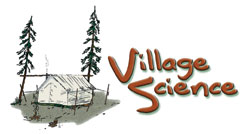
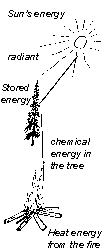 There
is a process of nature by which wood is developed.
There
is a process of nature by which wood is developed.


 Three
things are necessary to have fire:
Three
things are necessary to have fire:


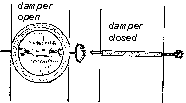 The
most important feature is an air intake control that doesn’t
leak air into the fire when it is shut down.
The
most important feature is an air intake control that doesn’t
leak air into the fire when it is shut down.
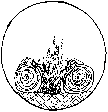
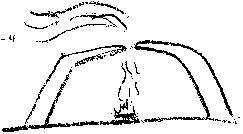 Warm
air rises because it is thinner and lighter than cold air. Wood
stoves draw air into the firebox and, as the air is heated in the
fire, it naturally rises up the stovepipe. Modern stoves and stovepipes
allow heat into the home while directing the smoke outside.
Warm
air rises because it is thinner and lighter than cold air. Wood
stoves draw air into the firebox and, as the air is heated in the
fire, it naturally rises up the stovepipe. Modern stoves and stovepipes
allow heat into the home while directing the smoke outside.

 Surface
Surface If
the stovepipe is too large in diameter, it will draw all the hot
air up the pipe, and won’t throw much heat into the house.
If the stovepipe is too small in diameter, the fire can’t get
enough air to burn well.
If
the stovepipe is too large in diameter, it will draw all the hot
air up the pipe, and won’t throw much heat into the house.
If the stovepipe is too small in diameter, the fire can’t get
enough air to burn well.
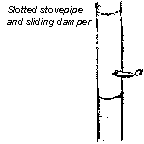 Types
of Stoves
Types
of Stoves Half-a-Drum
Stove
Half-a-Drum
Stove
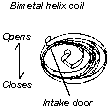
 Other
inefficiencies
Other
inefficiencies